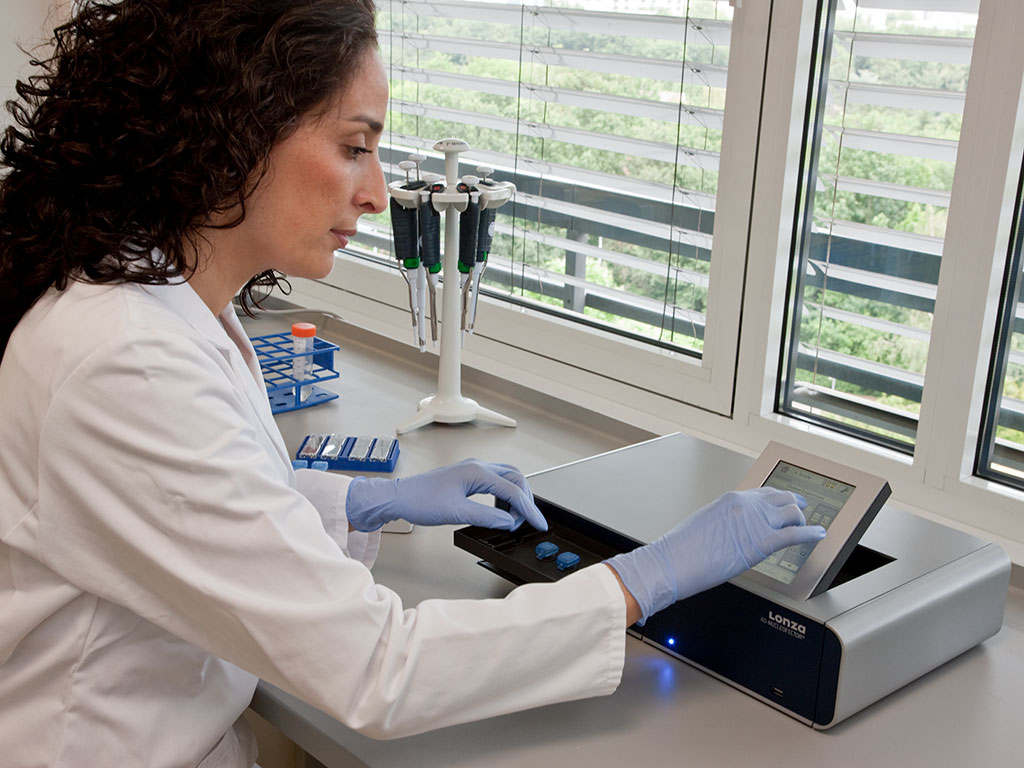Many applications and experiments that involve primary cells and cell lines rely on accurate cell counting. It is always important to determine and know, for example, how many cells you have when you begin a Nucleofection experiment or start a culture.
One of the most common, universal ways of doing this is using a Hemocytometer. It’s a rather basic method that doesn’t require any expensive equipment and works very well when done correctly. There might be some of you that haven’t used a hemocytometer before or perhaps don’t use one very often. This blog post is for you and I think you will find it very straightforward.
The hemocytometer is a device originally used to count blood cells (as the name suggests). It is now used to count other cells and many types of microscopic particles. It consists of a thick glass microscope slide with a rectangular indentation that creates a chamber of certain dimensions. This chamber is etched with a grid of perpendicular lines. The device is carefully crafted so that the area bounded by the lines is known, as well as the depth of the chamber. Therefore, it is possible to count the number of cells in a specific volume of fluid and calculate the concentration of cells in the fluid overall.
When a liquid sample containing cells is placed on the chamber, it is covered with a cover slip, and capillary action completely fills the chamber with the sample. Looking at the chamber through a microscope, the number of cells in the chamber can be determined by counting.
All hemocytometers consist of 2 chambers, each of which is divided into 9 squares with the dimension of 1 x 1 mm. A cover glass is supported 0.1 mm over these squares so that the total volume over each square is 1.0 mm2 x 0.1 mm or 0.1 mm3, or 10-4 cm3. Since 1 cm3 is equivalent to 1 ml, the cell concentration per ml will be the average count per square x 104. Any dilutions have to be taken into account for the calculation of the cell concentration.
The cell suspension should be diluted so that each such square has between
20 – 50 cells (2 – 5 x 105 cells/ml).
As I mentioned above, accuracy is important and obtaining accurate cell counts with a hemocytometer depends on the following:
- Accurate mixing of the sample (if bubbles are introduced into the chamber, the chamber will need to be emptied, cleaned, and filled again)
- Number of chambers counted; by performing a redundant test on a second chamber, you can compare the results
- Number of chambers counted; by performing a redundant test on a second chamber, you can compare the results
In a blog format such as this it is difficult to give visual guidelines so if you need to see an example, luckily three are many videos on YouTube these days. It seems you can find everything there and this includes cell counting tutorials using a hemocytometer. So, I would encourage you to search there for some video lessons.
For our purposes, here is a brief overview of counting with a hemocytomer.
- If necessary, trypsinize cells
- Pipet 10 μl of well resuspended cell suspension into Neubauer counting chamber
- Count cells in 1 quadrant. Alternatively as a general rule 2 – 4 quadrants are being counted.
- To determine cell number per ml, multiply cell number by factor of dilution and 104 (disregard trypan blue positive dead cells). If you count 2 – 4 quadrants you need to divide by the number of quadrants
If you are new to using a Hemocytometer, I hope this serves as a helpful introductory primer. If you are more experienced then hopefully this is a good refresher or simply just a handy reference that you can refer back to if needed.
As always if you have questions, please reach out to Scientific Support. We can be reached via email in the United States and Canada at scientific.support@lonza.com and in the EU/Rest of the World at scientific.support.eu@lonza.com
Written by Sean
Scientific Support Specialist, Lonza Pharma-Bioscience Solutions at Lonza

